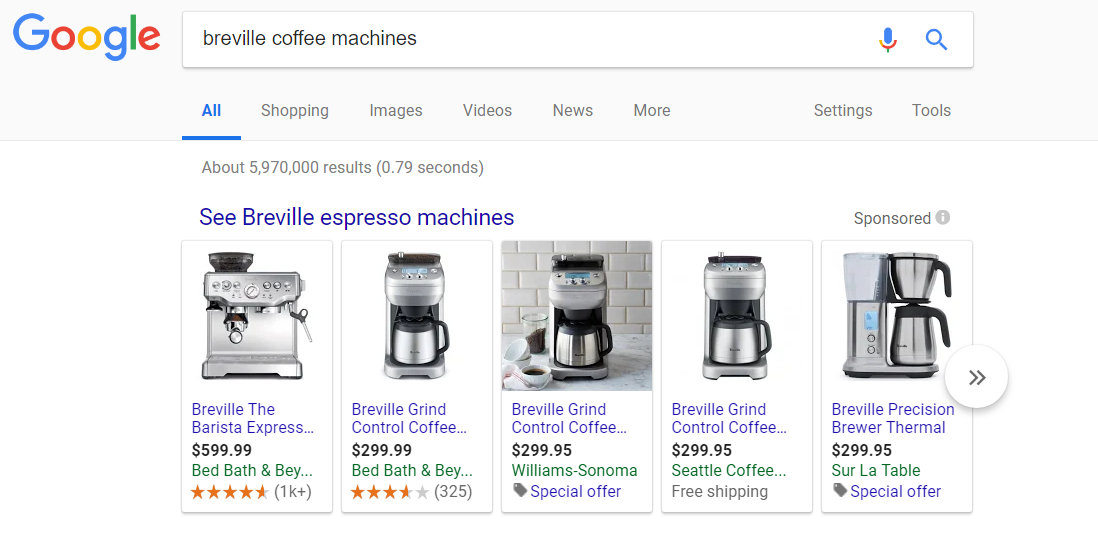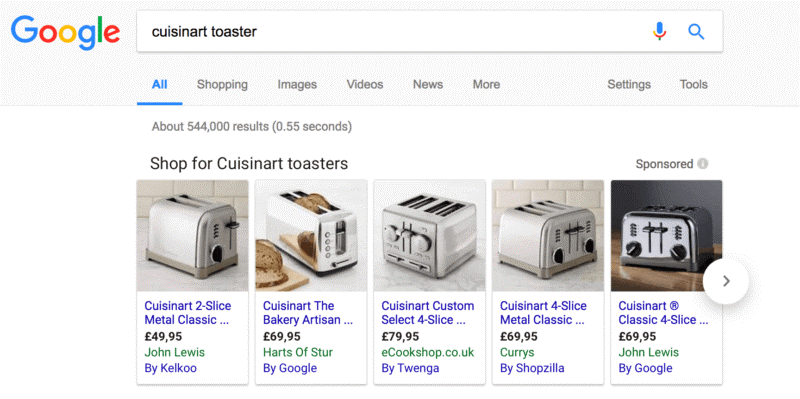It was the major talk of the town for a few months this year: The EU’s incredible anti-trust case against Google, but more specifically how Google had to alter Google Shopping in the European market altogether.
(You can read the exact details outlined in a memo released by the European Commission here.)
The bare bones of it all essentially boiled down to the belief that Google was allegedly abusing its market hold over comparison shopping in the EU. The European Commission alleged that Google was “favoring its own content and thus muscling out” its competitors in the various CSEs or Comparison Shopping Engines out there.
What came of this?
- Google was hit with a gargantuan 2.4 billion euro ($2.7 billion US dollar) fine
- Google has completely changed how Google Shopping works in the EU
But, there is a lot more to it than that.
What Does Google Shopping Look Like Now?
Shopping ads in the EU themselves, at least before the European Commission dropped the hammer on Google, were quite simple in their display. They included the basics:
- Product Image
- Product Name (Title)
- Price
- Website Name (URL)
And, in some cases, you might see promotional messaging such as “Free Shipping” or even a Merchant Promotions “Special Offer.”
This “Google Shopping Classic” (see what we did there?) can still be seen in the US results:

Now, let’s take a look at the “new” Shopping results as seen in the EU:

(Image courtesy of Search Engine Land)
Notice anything different?
Pretty hard to miss but as you can see the EU results now display an additional bit of information in the Shopping ad.
Equal Opportunity for Comparison Shopping Services
This is how Google Shopping has really changed in the EU. When ads are entered via the auction (how Google determines when and what ads are displayed) Google can no longer consume the entire Shopping results with “its own listings.”
Now, Google must give an equal number of digital shelf spaces up to what are known as Comparison Shopping Services (“By Shopzilla” for example).
That equality is essentially a 1:1 deal in that for every 1 “By Google” result, Google must include a “By [CSS NAME]” result as well
So, what does that mean for EU retailers or retailers outside the EU who still advertise there?
After it’s all said and done this can mean a few things:
- Fewer spots on Google Shopping
- More competition vying for those top placements
- Fewer impressions
- Increased Average Cost-Per-Click (CPC) due to fewer available ad positions
While Google is still working to appeal the case, as of right now this is what Google Shopping is in the EU.
Please note:
- Affected results are isolated to countries where Google Shopping is available: Austria, Belgium, Czech Republic, Denmark, Germany, France, Italy, Ireland, the Netherlands, Norway, Poland, Portugal, Spain, Sweden, Switzerland and the United Kingdom.
- CSSs are held to the very same submission requirements and product feed specifications that standalone retailers must adhere to.

